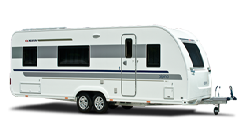
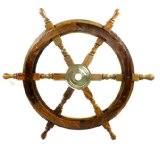
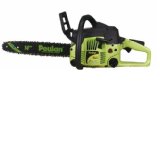
Search This Site
Search With Google
Bonsai Tree Classification
When it comes to the bonsai tree and classifying it there are 4 classifications which are represented. These classifications are size, shape, manner of growth and group and settings of the bonsai tree. Size of the bonsai tree is the first classification we shall look at. Here there are 4 sub categories.
Miniature bonsai
The miniature bonsai tree has a height of between 5 cm and 18 cm. This classification is down to good taste and there are actually no prizes for producing the smallest bonsai tree. The shito bonsai is a typical member of this classification, but to simplify matters, any bonsai tree that can be held in the palm of the hand is usually listed in this category. Because the bonsai tree that is applicable to this category has to be minute you could be easily mistaken in thinking that the types of trees available to grow are very limited are on a very limited basis. However this is not the case and the selection of bonsai trees is pretty much unlimited. There are no restrictions and these miniature bonsai simply perform in the same manner as their larger counterparts. That is to say that they grow, flower and produce fruit.
Small bonsai
The next stage of bonsai tree growing is that of the small bonsai. This is where the bonsai tree can reach a height of up to 30 cm. It is fair to say that many attractive bonsai trees can be grown in this category.
Medium bonsai
Of all the categories of the bonsai tree, this category is by far the most popular amongst growers. A bonsai tree here will be in proportion, not too large to handle, train or lift up. The maximum height here of the bonsai tree will be 65 cm.
Large bonsai
This category is actually quite vague. The size range begins at 65 cm high but can reach 100 cm or more in height. Because of the vagueness of size this category proves to be a popular choice amongst gardeners because it gives them a lot of options concerning containers, situation and growing capabilities of the gardener. Bonsai trees in this category can be called 2 man or 3 man trees as it requires 2 or 3 people to actually lift it.
Shape Classification Of The Bonsai Tree
When you look in nature you will see that trees all grow differently. Yes they grow upwards but not all trees grow straight upwards. They are affected by nature and their location. You will see that some trees are curved which is a natural characteristic with certain species. Other trees can be curved due to wind or a struggle in their immediate environment to grasp sunlight. No tree is the same and it is the ability to replicate these natural occurring differences which is the art of bonsai.
Formal Upright Style
This style of bonsai tree has a clean and straight growing trunk which tapers from the widest part of it’s trunk at soil level. The branches on this shaped bonsai tree will leave the trunk at right angles, gradually decreasing in size and thickness the higher up the trunk they leave the tree. The first branch will leave the trunk about a third of the way up of the total height of the trunk, with the last branch at the apex of the bonsai tree. The branches in this shape can be arranged to be alternative. The branches are pruned and shaped so that they do not grow in to each other. Pruning is also done to regulate the length of the branches and the branchlets. The height of the tree is continually controlled by pruning the central stem. Exact measurements are not used in this design of this tree regarding branch spacing etc. It is all done by eye to create a visual pleasure when looked at.
Informal Upright Style
These styles of bonsai tree take inspiration from natural trees with natural curves in their trunks. This category can also be known as the curved trunk tree. Basically the bonsai tree will grow upwards but in an irregular manner. The final result should be a bonsai tree that is informal but well balanced. With a tree with an irregular trunk, the branches will also be irregular but still in an alternating manner. The difference though of the positioning of the branches is that they should be on the outside of the curve of the trunk.
This means there will be fewer branches but designs of this type of tree are numerous. You will find a nice looking bonsai tree in this category will have 2 or 3 curves in it’s trunk. The top of the tree is also bent slightly forward towards the front of the bonsai tree. Because this tree has fewer branches it proves to be easier to train which is perhaps the reason it is such a popular style amongst growers.
Slanting Trunk Style
Again this style of bonsai tree has been inspired by naturally growing trees. In nature a young tree that is having problems with it’s root system and not anchoring itself properly can be blown by the wind off a vertical growing line. When the root system does eventually anchor, the tree will grow at an angle. Trees also growing on slopes have a slanting growth line. This is actually a challenging test for a bonsai tree grower. The branches on this style will be positioned on the upper side of the trunk, as they would in nature, to have easy access to the sun. The problem with this though is that all the branches on the upper side of the trunk will deprive any sunlight to under branches and foliage, by casting a shadow. To obtain this style a grower needs to plant the bonsai tree at an angle and using plenty of wire in the shaping.
Semi-
This style of bonsai tree is where the trunk grows in a horizontal direction with all the branches growing from the upper side of the trunk in a pretty unusual pattern. Very similar to trees that grow on rocks in nature. With the art of bonsai the grower trains the branches to give a tree shape on the top side of the trunk.
These types of bonsai trees need to be grown in tall bonsai pots to allow and counterbalance the weight from the extended trunk and branches. The weight of the pot has to be considerable as well. As does the volume of soil used. These combined ensure that the bonsai tree does not pull itself out of the pot and remains firmly anchored.
Cascade Style
Quite a dramatic bonsai style this one. It is where the trunk of the bonsai tree comes out of the soil in an upright manner and then turns down at 180 degrees to grow downwards. A cascading bonsai tree is so classified when the tip of the trunk grows below the rim of the bonsai pot. When selecting a tree for this classification it is worth remembering that any strong and vigorous upright growing trees are not suitable. Tall bonsai pots are used with this type of bonsai and the best places to situate them are on a table or some sort of tall stand so that the cascading properties are extenuated.
Moisture Meter Guide 2010 Contact details:garnett65@hotmail.com
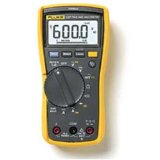

The complete moisture meter website
Moisture Meter Guide
Wagner Moisture Meters
General Tools MMD5NP Pinless LCD
General Tools MMD7003 Precision
General Tools MMD8P Multi Species
General Tools MM700D Precision
Boat Moisture Meter
A moisture meter proves itself to be a useful tool when testing the moisture content levels of boat materials. When assessing a boat, care, judgement and experience should all be employed and then the moisture meter used as the last tool to give the final assessment. Moisture meters for boats
Need A Chainsaw For Firewood?
The petrol chainsaw is used to fell trees, as well as for pruning and cutting overgrowth. Tree surgeons favour the petrol chainsaw and use it for cutting away branches and foliage. Best chainsaw
Orchid Moisture Meter
The orchid belongs to a widespread and very diverse family of flowering plants which have fragrant and colourful blooms. Orchids can be found in pretty much every habitat. Flower damp tester
Caravan Moisture Meter
Any caravan that is kept open to the elements all year round can become very susceptible to damp and damp related problems if proper precautions are not taken to prevent this. Humidity meters
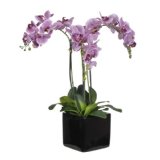
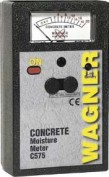
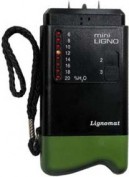
Garden Moisture Meter
The garden moisture meter helps any avid gardener to measure and monitor many different conditions to ensure that they can maintain healthy growing conditions for both indoor as well as outdoor plants. In order to have healthy thriving plants Garden moisture meter

| Tramex Moisture Encounter Plus |
| Tramex Compact Wood Moisture Meter |
| Tramex Concrete Encounter Moisture Meter |
| Tramex Skipper Plus Moisture Meter |
| Tramex Roof And Wall Moisture Scanner |
| Sonin Digital Moisture Meter model 50218 |
| Sonin Digital Moisture Meter 270 model 50270 |
| Sonin Moisture Test Tool model 50210 |
| Sonin Moisture Test Meter Model 50211 |
| Oak |
| Douglas Fir |
| Beech Tree |
| Elm Tree |
| Hickory Tree |
| Maple Tree |
| Pine Tree |
| Prevent And Repair Gaps In Wooden Floorboards |
| How To Fix A Squeaky Hardwood Floor |
| How To Repair A Hardwood Floor That Has Buckled |
| Which Is The Best Firewood? |
| Concrete |
| Concrete Moisture |
| Screed Moisture Meter |
| SDS Drill |
| Belle Cement Mixer |
| SDS Drill Advice |
| Which SDS Drill |
| SDS Drill Accessories |
| Drilling Into Concrete |
| Kennedy Tool Box |
| Moisture - Basic Facts |
| Types Of Damp |
| Wet Rot |
| Dry Rot |
| Mold |
| Water Leak Detection |
| Stucco Moisture |
| Water Damage |
| Moisture And Rust |
| Moisture Damage To A Chimney |
| Wallpaper Stripper |
| Plaster Mixer |
| Why Worry About Moisture Problems |
| Does Your Home Have A Moisture Problem? |
| How To Solve Moisture Problems |
| How To Use Anti Mold Paint |
| Rising Damp |
| Condensation |
| Salt Damp |
| How To Avoid Bathroom Condensation |
| How To Remove Black Mold |
| How To Prevent Bathroom Mold |
| Soldering Kit |
| Soldering Kit Contents |
| Soldering Kit Advice |
| Bonsai Tree Classification |
| Growing Bonsai From Seed |
| Bonsai Tree Care |
| Bonsai Tree Training |
| Bonsai Tools |
| Displaying Bonsai |
| Bonsai Calendar |
| Bonsai Plants |
| The Thirsty Light Curve Moisture Meter |
| The Thirsty Light Ladybird Moisture Meter |
| The Thirsty Light Bumble Bee Moisture Meter |
| The Thirsty Light Butterfly Moisture Meter |
| Hanna Instruments |
| Agratronix Portable Coffee Moisture Tester |
| Lawn Aerator |
| Lawn Roller |
| Lawn Rake |
| Lawn Sand |
| Chainshot |
| Chainsaw Gloves |
| Chainsaw Trousers |
| Chainsaw Boots |
| Mac 4 - 20 XT Chainsaw |
| Mac 738 Chainsaw |
| Mac 842 Chainsaw |
| Mac 20X Power Chainsaw |
| Einhell BG-PC 3735 Chainsaw |
| Einhell BG-PC 4040 Chainsaw |
| Einhell BG-PC 5045 Chainsaw |
| Poulan P3314 Chainsaw |
| Poulan P4018 Chainsaw |
| Poulan Pro PP3816AV Chainsaw |
| Poulan Pro PP4218AVX Chainsaw |
| Poulan Pro PP4620AVX Chainsaw |
| Efco MT 4100 SP Chainsaw |
| Efco MT 3500 Chainsaw |
| Efco 132 S Chainsaw |
| Efco 147 Chainsaw |
| Efco 152 Chainsaw |
| Efco MT 7200 Chainsaw |
| Efco MT 8200 Chainsaw |
| Efco MT 3750 Chainsaw |
| Methods Of Obtaining Soil Moisture Levels |
| Hygrometer |
| Psychrometer |
| Rain Gauge |
| Wave Ventilation System |
| Humidity |
| Hygrometer For Keeping Reptiles |
| Humidor |
| Weather Stations |
| Musical Instrument Storage |